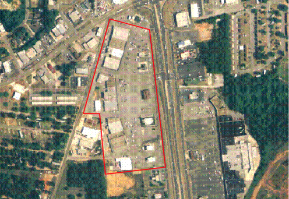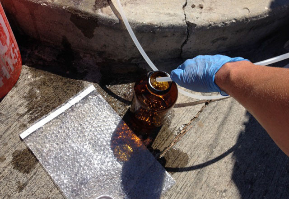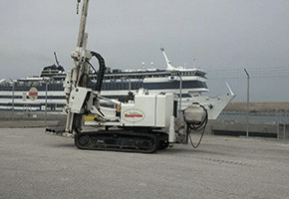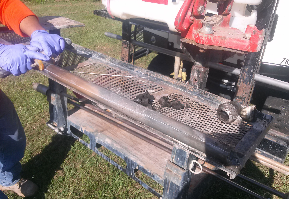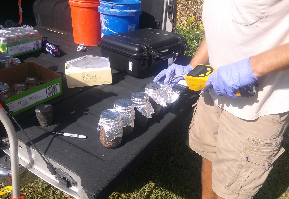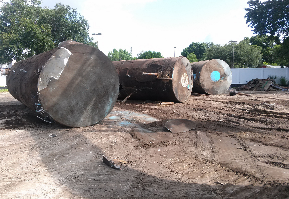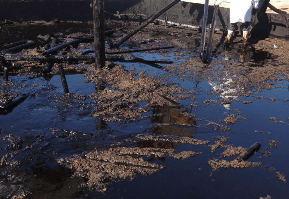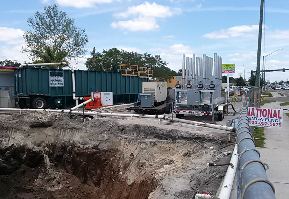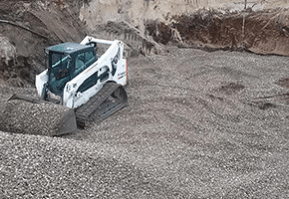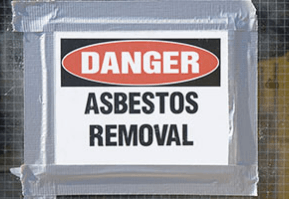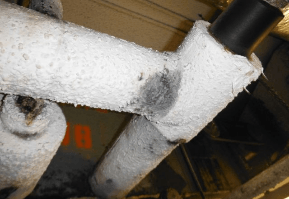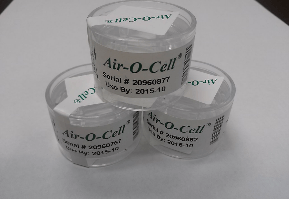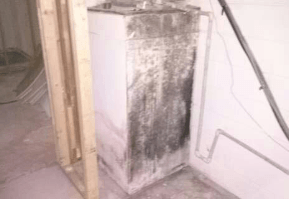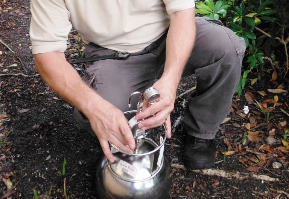Services
Changing the face of environmental consulting.
Driven by our people. Proven by your success.
Phase I Environmental Site Assessments
The first step in defining environmental liability begins here. EAC considers it an obligation to inform our clients of any potential environmental conditions that may impact the value of their property, pose present or future liabilities or to affect an “innocent land owner” claim. EAC completes comprehensive Environmental Site Assessments (ESA) in accordance with the (1) United States Environmental Protection Agency (USEPA) Standards and Practices for All Appropriate Inquiries {(AAI), 40 CFR Part 312} and (2) guidelines established by the American Society for Testing and Materials (ASTM) in the Standard Practice for Environmental Site Assessments: Phase I Environmental Site Assessment Process / Designation E 1527-05/13 (ASTM Standard Practice E 1527-05/13): Phase I Environmental Site Assessment, for real estate transactions, property development, bank financing, re-financing, and foreclosures. When a full Phase I is not warranted we offer alternatives such as Transaction Screens (ASTM 1528-06) or Record Search Risk Analysis (RSRA) studies.
Investigations will always include extensive historical research, site visits, interviews, file review and timely updates to our client. Reporting will be clear, concise, visual and reflective of any specific lender or client requirements for language or non-scope investigations. Conclusions and recommendations are practical and indicative of the decades of professional experience and continued education our Environmental Professionals go through. Opinions rendered by our company are reflective of our experience, as well as that of industry experts and regulators.
Phase II Environmental Site Assessments
The purpose of a Phase II Subsurface investigation is to evaluate the Recognized Environmental Conditions (RECs) identified in the Phase I investigation in an effort to confirm or deny the presence of the RECs. EAC has become noted for its practical approach toward designing and implementing its Phase II ESAs, while still being in complete accordance with ASTM Standards as well as State, Federal and Local requirements.
EAC provides quick-turnaround, high-quality Phase II Environmental Subsurface Investigations, Comprehensive Site Assessments, and Baseline Site Assessments to provide critical environmental quality information for use in business decision making. EAC routinely provides these services to some of the nation's largest lenders and property owners for asset valuation and liability reduction. We are well versed in the federal, state and local regulations and understand the difference in impact between significant and minimal contamination issues. We consult directly with our clients to customize a scope of work that meets their specific needs (time, cost, accuracy) and risk tolerances to ensure that Recognized Environmental Conditions are addressed and investigated appropriately.
EAC’s Phase II Limited Subsurface Investigations evaluate identified Recognized Environmental Conditions (RECs) for the purpose of providing sufficient information to confirm the presence or absence of the REC, assist our clients in making informed business decisions about the property, and where applicable, provide knowledge necessary to satisfy the innocent purchaser defense under CERCLA. Our standard Phase II services are designed to meet the requirements of the ASTM E1903-11 : Standard Practice for Environmental Site Assessments.
Our sub-surface investigations can include (but are not limited to):
- Soil and groundwater sampling and analysis
- Sediment and surface water sampling and analysis
- Soil vapor and indoor air sampling and analysis
- Groundwater flow modeling
- Geophysical surveys
- Indoor-air vapor intrusion assessment
- Contaminant source differentiation
- Risk Characterization
- Sensitive receptor surveys
Tank Closures / Contamination Assessments / Site Characterizations
EAC's environmental professionals have performed hundreds of tank closures and are highly trained, and qualified to perform Underground Storage Tank Closures and conduct Contamination Assessments (CA) for petroleum handling facilities. EAC provides on-site support and management for the proper closure (both by removal and in-place) of underground storage tanks (UST). EAC manages the process from end to end including obtaining all necessary permits, preparing health and safety plans, providing oversight for disposal of residual hydrocarbons, excavating / stockpiling of overburden soils, proper disposal of the USTs, sampling of excavated and tank pit soils for analysis by third party laboratories, restoring project sites to existing grade and preparing closure reports for submission to the appropriate state and federal regulatory authorities.
EAC has investigated a broad range of contaminated sites, such as petroleum spills involving underground storage tanks, industrial discharges to underground injection wells, and hazardous waste spills from chemical storage. By using state-of-the-art field equipment and State-certified laboratories to test various media, we accurately characterize subsurface soil, sediment, surface waters, groundwater, soil vapor intrusion, and air quality. By conducting site research, testing and performing due diligence work on site, EAC engineers are able to determine what types of contaminants could potentially be found there. When available, details about the history and previous uses of the site are also factored into the analysis. Lastly, EAC’s team of engineers and scientists collaborate to identify, verify, prioritize and address the most serious contamination issues associated with the site. The team then actively engages with local officials and other stakeholders to determine the best course of action moving forward. Once the extent of contamination is defined, our experienced project managers can design an appropriate and cost effective remediation plan that works right the first time. Our multidisciplinary team has investigated thousands of sites throughout the Southeast, ranging from small corner gas stations and dry cleaners, to large industrial properties and bulk fueling facilities.
Remediation
Regardless of the nature of the contaminant, the goal of the project is the same: to define the extent of the contamination and determine the optimal remedial strategy. EAC has assessed all types of contaminants under many different conditions and uses the best and most reliable tools to collect environmental data to eliminate the uncertainty when targeting contamination.
EAC provides the necessary materials, equipment, and labor to meet your project, schedule, budget, and site setting characteristics. We have been successful in bringing hundreds of properties to NFA/SRCO status quickly and effectively in accordance with regulatory requirements while saving our customers time and money. Our excellent relationships with regulatory agency personnel and extensive knowledge of regulatory procedures assures speedy report reviews.
Remediation systems for soil and groundwater require operations and maintenance to keep the systems running as designed and to optimize efficiency by making field adjustments accordingly.
EAC has extensive experience in the management of soil and groundwater remediation systems. In addition, EAC maintains a group of professionals with specific experience and expertise in the assessment, remediation, and management of oil and gas retail marketing facilities, bulk fuel transportation facilities, and industrial manufacturing facilities.
By evaluating site-specific conditions alongside client objectives, EAC strategically implements institutional controls, engineering controls, and remedial technologies such as ex-situ soil excavation and off-site disposal, soil vapor extraction, air sparging, dual phase extraction, groundwater pump and treat, enhanced fluid recovery, in-situ chemical oxidation, in-situ bioremediation, enhanced bioremediation, bioventing, bio-seeding, metals stabilizing, vapor barriers, monitored natural attenuation, and plume modeling/risk-based closures.
Asbestos
EAC routinely provides services related to identifying Asbestos Containing Material (ACM) and managing ACM in place as part of an O & M Plan. EAC's staff (EPA Accredited Asbestos Surveyor's and Licensed Asbestos Consultants) have the knowledge, expertise, and experience required to provide a full range of asbestos services and consulting.
Asbestos services may consist of sampling suspect materials, providing laboratory analysis of materials (PLM, PCM, and Point Counting), writing Operations and Maintenance Plans (O & M) as well as compiling the final technical asbestos report. Asbestos Consulting does not end upon delivery of the final report, however. Upon the positive identification of ACM within a structure, EAC then works diligently with client to assure that a competent Asbestos Abatement Contractor is selected to remove and properly dispose of the ACM in accordance with all State and Federal Guidelines.
EAC has extensive experience in the areas of asbestos inspection, asbestos bulk surveys, asbestos air sampling, abatement specifications, asbestos project design, project management and monitoring, asbestos investigation and asbestos consultant and expert witness for our Florida clients.
Mold & Vapor Investigations
Mold is also becoming an increasing problem for buildings and structures, especially those located in the Southeast where the climate is warm and humid for a large percentage of the year. EAC provides a wide range of services to address mold issues, including:
- Visual Inspections and Assessments
- Air & Swab sampling as well as development of work plans
- Selection and oversight of mitigation and abatement contractors
- Post-remediation testing
EAC provides our findings in a comprehensive report that addresses project scope, air sampling, findings and recommendations for abatement and prevention. EAC has performed mold assessment services for residential clients, commercial businesses, governmental clients, and school systems.
Soil Vapor Intrusion is another pathway for releases of contaminants to a property. Over the past several years, vapor intrusion has gained significant attention. In addition, the American Society of Testing & Materials (ASTM) has issued a standard (Standard Practice for Assessment of Vapor Intrusion into Structure on Property Involved in Real Estate; ASTM-2600-08) which provides the guidance for performing a Vapor Intrusion Assessment. This Standard is often used in conjunction with a Phase I Environmental Site Assessment to determine if “potential vapor intrusion conditions” (pVICs) are present prior to a real estate transaction.
EAC has performed numerous vapor intrusion investigations for onsite and offsite chlorinated solvent (i.e. perc, and TCE) and petroleum (i.e. gasoline and fuel oil) contamination. These investigations involve the collection of sub-slab, soil gas, and indoor air samples in stainless steel canisters or passive monitors with the appropriate laboratory analysis.

We are pleased to be able to offer our services under GSA Multiple Award Schedule Contract #GS-10F-181BA. NAICS Codes: #541330 - Engineering Services; #541620 - Environmental Consulting Services and #562910 - Remediation Services.
Navigation
Services
Office Locations
Deerfield Beach, FL
Charlotte, NC
Atlanta, GA
Tallahassee, FL
Sarasota, FL



